Yuki Kawana
GA3CE: Unconstrained 3D Gaze Estimation with Gaze-Aware 3D Context Encoding
May 15, 2025Abstract:We propose a novel 3D gaze estimation approach that learns spatial relationships between the subject and objects in the scene, and outputs 3D gaze direction. Our method targets unconstrained settings, including cases where close-up views of the subject's eyes are unavailable, such as when the subject is distant or facing away. Previous approaches typically rely on either 2D appearance alone or incorporate limited spatial cues using depth maps in the non-learnable post-processing step. Estimating 3D gaze direction from 2D observations in these scenarios is challenging; variations in subject pose, scene layout, and gaze direction, combined with differing camera poses, yield diverse 2D appearances and 3D gaze directions even when targeting the same 3D scene. To address this issue, we propose GA3CE: Gaze-Aware 3D Context Encoding. Our method represents subject and scene using 3D poses and object positions, treating them as 3D context to learn spatial relationships in 3D space. Inspired by human vision, we align this context in an egocentric space, significantly reducing spatial complexity. Furthermore, we propose D$^3$ (direction-distance-decomposed) positional encoding to better capture the spatial relationship between 3D context and gaze direction in direction and distance space. Experiments demonstrate substantial improvements, reducing mean angle error by 13%-37% compared to leading baselines on benchmark datasets in single-frame settings.
Detection Based Part-level Articulated Object Reconstruction from Single RGBD Image
Apr 04, 2025


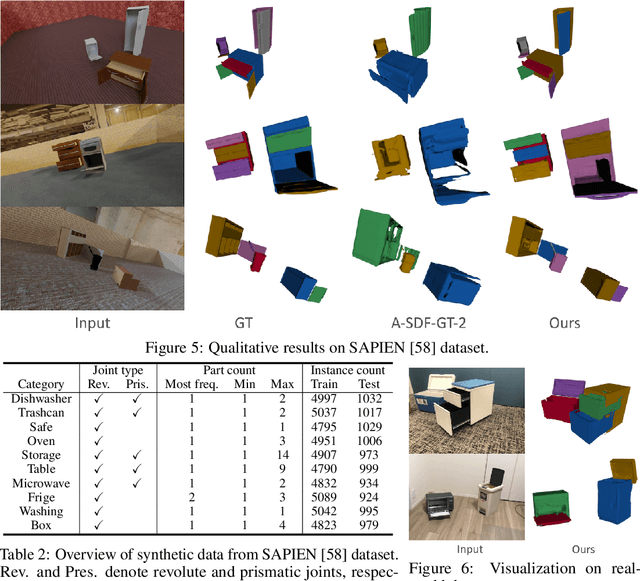
Abstract:We propose an end-to-end trainable, cross-category method for reconstructing multiple man-made articulated objects from a single RGBD image, focusing on part-level shape reconstruction and pose and kinematics estimation. We depart from previous works that rely on learning instance-level latent space, focusing on man-made articulated objects with predefined part counts. Instead, we propose a novel alternative approach that employs part-level representation, representing instances as combinations of detected parts. While our detect-then-group approach effectively handles instances with diverse part structures and various part counts, it faces issues of false positives, varying part sizes and scales, and an increasing model size due to end-to-end training. To address these challenges, we propose 1) test-time kinematics-aware part fusion to improve detection performance while suppressing false positives, 2) anisotropic scale normalization for part shape learning to accommodate various part sizes and scales, and 3) a balancing strategy for cross-refinement between feature space and output space to improve part detection while maintaining model size. Evaluation on both synthetic and real data demonstrates that our method successfully reconstructs variously structured multiple instances that previous works cannot handle, and outperforms prior works in shape reconstruction and kinematics estimation.
WTS: A Pedestrian-Centric Traffic Video Dataset for Fine-grained Spatial-Temporal Understanding
Jul 22, 2024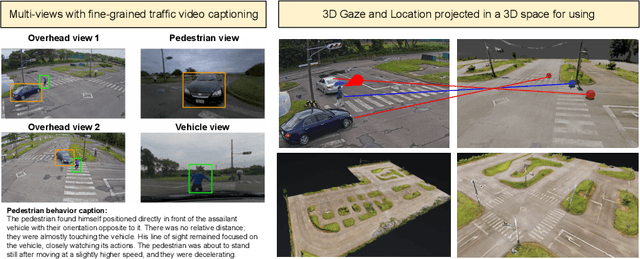
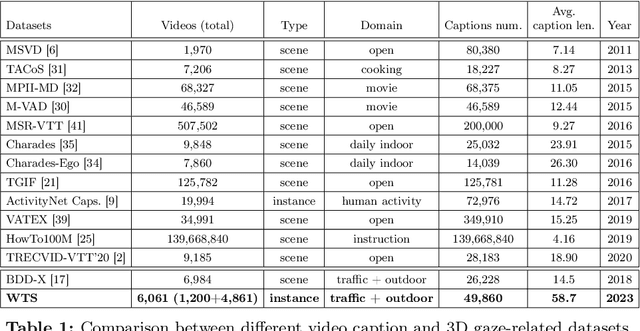
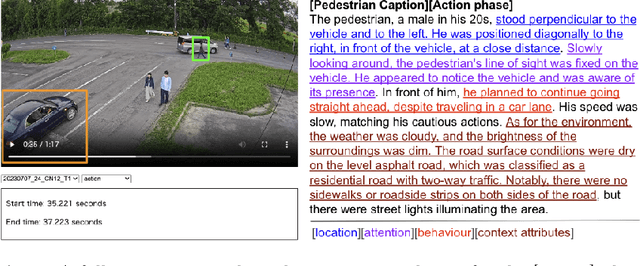
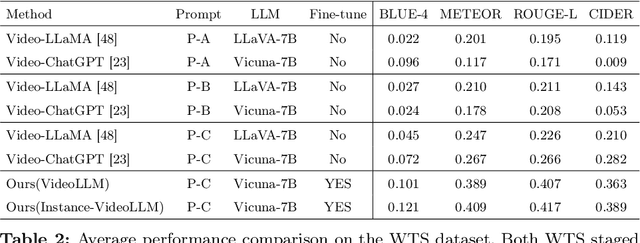
Abstract:In this paper, we address the challenge of fine-grained video event understanding in traffic scenarios, vital for autonomous driving and safety. Traditional datasets focus on driver or vehicle behavior, often neglecting pedestrian perspectives. To fill this gap, we introduce the WTS dataset, highlighting detailed behaviors of both vehicles and pedestrians across over 1.2k video events in hundreds of traffic scenarios. WTS integrates diverse perspectives from vehicle ego and fixed overhead cameras in a vehicle-infrastructure cooperative environment, enriched with comprehensive textual descriptions and unique 3D Gaze data for a synchronized 2D/3D view, focusing on pedestrian analysis. We also pro-vide annotations for 5k publicly sourced pedestrian-related traffic videos. Additionally, we introduce LLMScorer, an LLM-based evaluation metric to align inference captions with ground truth. Using WTS, we establish a benchmark for dense video-to-text tasks, exploring state-of-the-art Vision-Language Models with an instance-aware VideoLLM method as a baseline. WTS aims to advance fine-grained video event understanding, enhancing traffic safety and autonomous driving development.
Unsupervised Pose-Aware Part Decomposition for 3D Articulated Objects
Oct 08, 2021



Abstract:Articulated objects exist widely in the real world. However, previous 3D generative methods for unsupervised part decomposition are unsuitable for such objects, because they assume a spatially fixed part location, resulting in inconsistent part parsing. In this paper, we propose PPD (unsupervised Pose-aware Part Decomposition) to address a novel setting that explicitly targets man-made articulated objects with mechanical joints, considering the part poses. We show that category-common prior learning for both part shapes and poses facilitates the unsupervised learning of (1) part decomposition with non-primitive-based implicit representation, and (2) part pose as joint parameters under single-frame shape supervision. We evaluate our method on synthetic and real datasets, and we show that it outperforms previous works in consistent part parsing of the articulated objects based on comparable part pose estimation performance to the supervised baseline.
Neural Star Domain as Primitive Representation
Nov 12, 2020


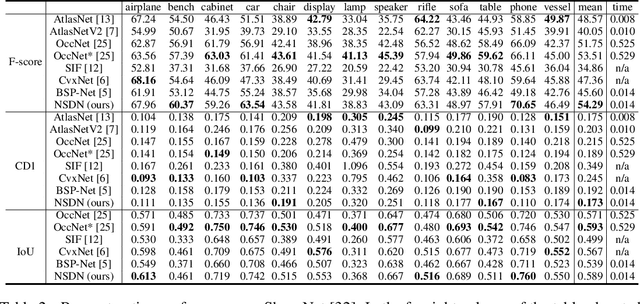
Abstract:Reconstructing 3D objects from 2D images is a fundamental task in computer vision. Accurate structured reconstruction by parsimonious and semantic primitive representation further broadens its application. When reconstructing a target shape with multiple primitives, it is preferable that one can instantly access the union of basic properties of the shape such as collective volume and surface, treating the primitives as if they are one single shape. This becomes possible by primitive representation with unified implicit and explicit representations. However, primitive representations in current approaches do not satisfy all of the above requirements at the same time. To solve this problem, we propose a novel primitive representation named neural star domain (NSD) that learns primitive shapes in the star domain. We show that NSD is a universal approximator of the star domain and is not only parsimonious and semantic but also an implicit and explicit shape representation. We demonstrate that our approach outperforms existing methods in image reconstruction tasks, semantic capabilities, and speed and quality of sampling high-resolution meshes.
 Add to Chrome
Add to Chrome Add to Firefox
Add to Firefox Add to Edge
Add to Edge